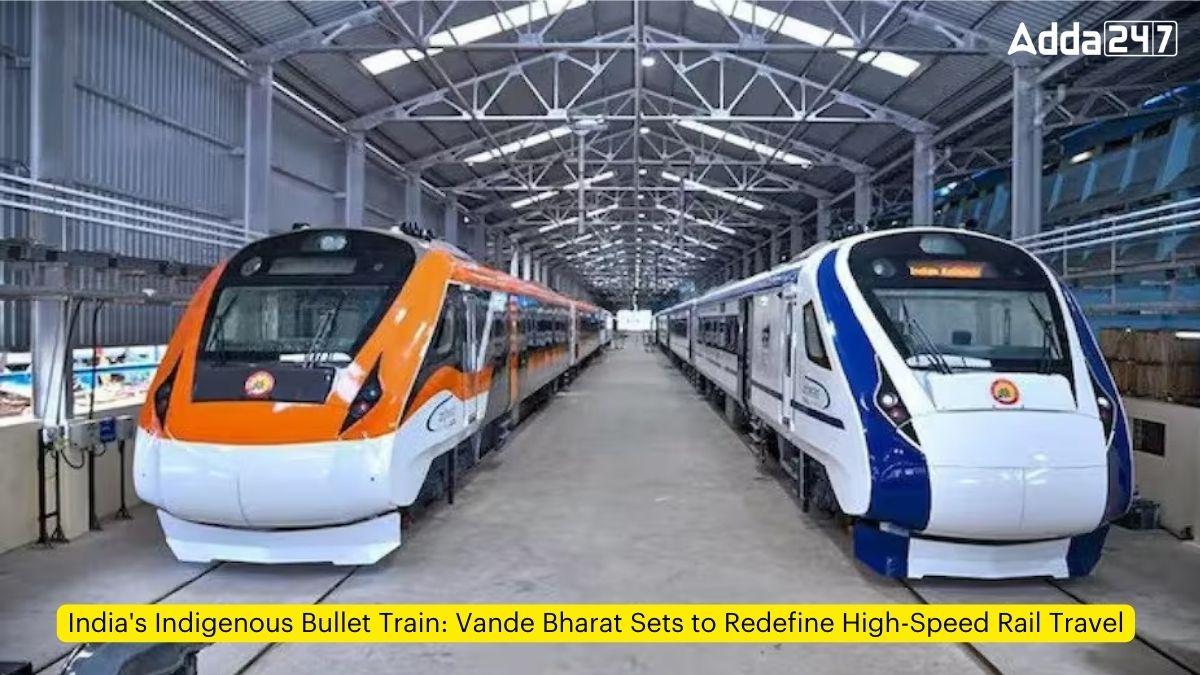In a significant stride towards advancing India’s rail infrastructure, the country is gearing up to launch an indigenous bullet train capable of reaching speeds exceeding 250 kilometres per hour (km/h). This groundbreaking initiative is set to revolutionize high-speed rail travel in India, showcasing the nation’s engineering prowess and commitment to cutting-edge technology.
Vande Bharat: The Pride of Indian Railways
The Vande Bharat trains, manufactured by the Indian Railways’ Integral Coach Factory (ICF) in Chennai, are at the forefront of this ambitious project. These state-of-the-art trains are designed to operate on the recently announced north, south, and east corridors, reaching a top speed of 220 kmph – faster than any existing train on the Indian Railways network.
Accelerating towards High-Speed Excellence
The National High-Speed Rail Corporation Ltd (NHSRCL), responsible for executing India’s first bullet train project, has made remarkable progress. It has already completed 300 kilometres of pier work, laying the foundation for the country’s journey into high-speed rail excellence. Additionally, the extensive land acquisition process for the entire 508-kilometre route was successfully completed in January, paving the way for seamless implementation.
Vande Bharat: A Showcase of Indigenous Engineering
The Vande Bharat trains are a testament to India’s indigenous engineering capabilities, seamlessly fusing Indian technology with domestic manufacturing. The upcoming bullet train under development is based on the Vande Bharat platform, boasting an impressive acceleration from zero to 100 kmph in just 52 seconds – outpacing existing bullet trains, which typically achieve this feat in 54 seconds.
Collaboration with Japan for High-Speed Rail Excellence
While India is currently leveraging Japanese technology for the bullet trains that will operate on the Ahmedabad to Mumbai line, the Vande Bharat trains will incorporate more Indian technology and domestic manufacturing. This strategic approach not only fosters self-reliance but also paves the way for the development of a new corridor complementing the existing western corridor, created with Japanese assistance.
The Japan International Cooperation Agency (JICA) is providing a soft loan of approximately Rs. 40,000 crore for the Mumbai-Ahmedabad High Speed Rail project, which has a total project cost of more than Rs. 1.08 lakh crore. This collaboration underscores India’s commitment to achieving high-speed rail excellence through strategic partnerships and knowledge sharing.
Redefining Rail Travel in India
With the launch of the indigenous bullet train, India is poised to redefine rail travel within its borders. The introduction of high-speed rail will not only enhance connectivity and reduce travel times but will also catalyze economic growth, tourism, and regional development. This ambitious endeavor is a testament to India’s unwavering determination to embrace cutting-edge technology and position itself as a global leader in sustainable transportation solutions.
As the country eagerly awaits the maiden journey of the indigenous bullet train, the Vande Bharat project stands as a symbol of India’s technological prowess, innovative spirit, and commitment to transforming the nation’s infrastructure for a brighter, more connected future.



 Ashwini Vaishnaw Inaugurates India’s 5...
Ashwini Vaishnaw Inaugurates India’s 5...
 Vriksharopan Abhiyan 2024 Launch in Dhan...
Vriksharopan Abhiyan 2024 Launch in Dhan...
 India's Installed Nuclear Power Capacity...
India's Installed Nuclear Power Capacity...
